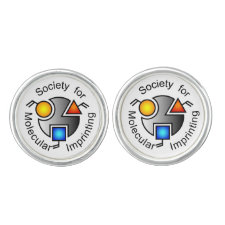
Authors: Wan W, Biyikal M, Wagner R, Sellergren B, Rurack K
Publication date: 2013
Article title: Enantioselective Fluorescence Response of Molecularly Imprinted Polymers (MIPs) toward Carbobenzyloxy- (Cbz) protected Amino Acids.
Page numbers: 53-58
DOI: 10.5162/11dss2013/3.2 Alternative URL: https://www.researchgate.net/publication/326440803_Enantioselective_Fluorescence_Response_of_Molecularly_Imprinted_Polymers_MIPs_toward_Carbobenzyloxy-_Cbz_protected_Amino_Acids
ISBN: 978-3-9813484-5-3
Conference information: Proceedings Dresdner Sensor Symposium 2013
Abstract: Integration of a polymerisable fluorescent urea-nitrobenzoxadiazole monomer 1 into a few-nanometre thin molecularly imprinted polymer (MIP) shell coated onto a 300 nm silica core with the tetrabutylammonium salt of N-carbobenzyloxy-L-phenylalanine (Cbz- or Z-L-Phe) as the imprinted template yields core/shell MIP nanoparticles that respond to the designated analyte with a strong fluorescence increase in the visible spectral range. The system shows promising imprinting and enantioselectivity factors of 3.6 and 1.9 when benzylmethylacrylate (BMA) is used as co-monomer and ethylene glycol dimethacrylate (EDMA) as cross-linker. A second, naphthalimide-based fluorescent urea 2 is employed in the preparation of MIP thin-films and monolithic polymers for separation techniques. Spectroscopic and chromatographic studies of the MIPs with the analytes Z-L-Phe, Z-Lglutamic acid (Z-L-Glu) and penicilin G (PenG) revealed the (enantio)selective discrimination behaviour of these materials.
Author keywords: enantioselectivity, molecular imprinting, fluorescence, Core-shell nanoparticles, chromatography



Join the Society for Molecular Imprinting

New items RSS feed
Sign-up for e-mail updates:
Choose between receiving an occasional newsletter or more frequent e-mail alerts.
Click here to go to the sign-up page.
Is your name elemental or peptidic? Enter your name and find out by clicking either of the buttons below!
Other products you may like:
 MIPdatabase
MIPdatabase









